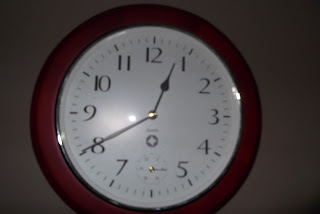
Bike man, Meter man, whatever the fuck, can you tell me
where 121 S. Tejon is? In a bold confident voice, “you are on N. Tejon and S.
Tejon begins after Colorado.” I answer by telling him that I drove down S.
Tejon and the numbers were growing in the five, and six hundreds, and he told
me to keep going further south until the numbers start over. WTF…
I pull out the directions I made from UCCS because I thought
my first class would have kept me there longer. 12:52pm… I followed the
directions and parked by a meter where I only mustered a measly ninety-five cents, so I asked two
Caucasian hiker guys if they could spare any change and they emptied their
pockets. 12:59pm… I walk in flustered but composed while thinking I should have
pulled out my directions beforehand and thank God I did not take the Meter
man’s advice!
Part Two:
One of the main arguments I noticed
was that the invention of the camera changed people’s perspective of time. Therefore,
many paintings have lost their originality and uniqueness because of
reproductions created by camera images. Paintings have a timeless quality to
them because they tend to depict an entire scene from the perspective of the
artist in a specific time-period. Hierarchies and royal families often were
depicted in their wealth and glory. In a photograph of traffic one will notice
the year and make of a vehicle and apply that to some form of time and space in
their life. A painting will lead the viewer to notice brush strokes,
compositional unity, symmetry, the use of vibrant and contrasting colors, and
the intent of the scene.
Before the camera, paintings were
viewed on the ceiling of a cathedral, a prestigious address, or an artist
showcase. However, the invention of the camera has led to paintings being,
“defined as an object whose value depends upon its rarity” (pp.21). The camera
has moved people away from the feelings and meaning of a painting toward the
rarity of its reproductions. Therefore, none of the artists seen at the gallery
can be viewed in terms of rarity. The photographer could become infamous, but
essentially they are dependent upon the audience capturing the feelings and
meaning while transporting themselves into the time and space they have
created.
I’m not an expert on photography,
but I cannot imagine it being terribly popular in the art world. Andrea Wallace
has the best chance of having her images valued in a like manner to a painting.
She captures a scene where the perspective is deliberate. The women curled up
in the snow causes a viewer to ponder its meaning, but the other two exhibits
were progressive and personal. Andrea is effective in using perspective similar
to an accomplished painter. She has successfully placed the viewer in the
center of her world. Perspective is more evident in her clementine and snow
images than any of her other displayed images.





You've made an interesting point regarding fine art photography and its dependence on meaning and the subjective observer. What happens when it is abstract photography, I wonder?
ReplyDelete